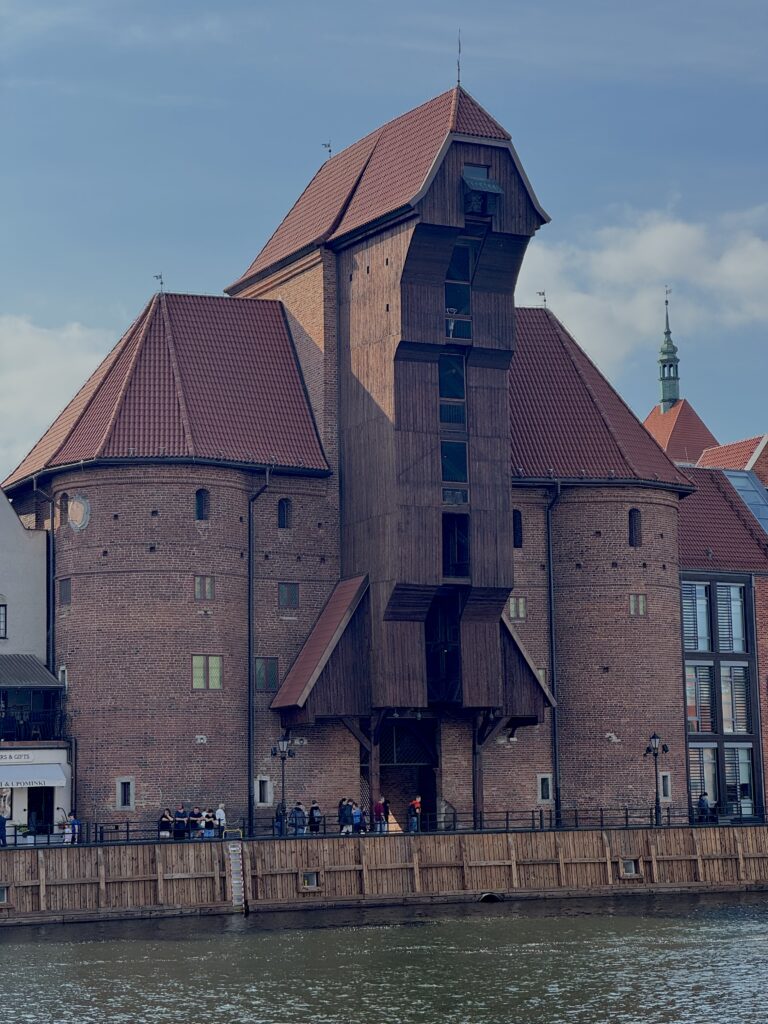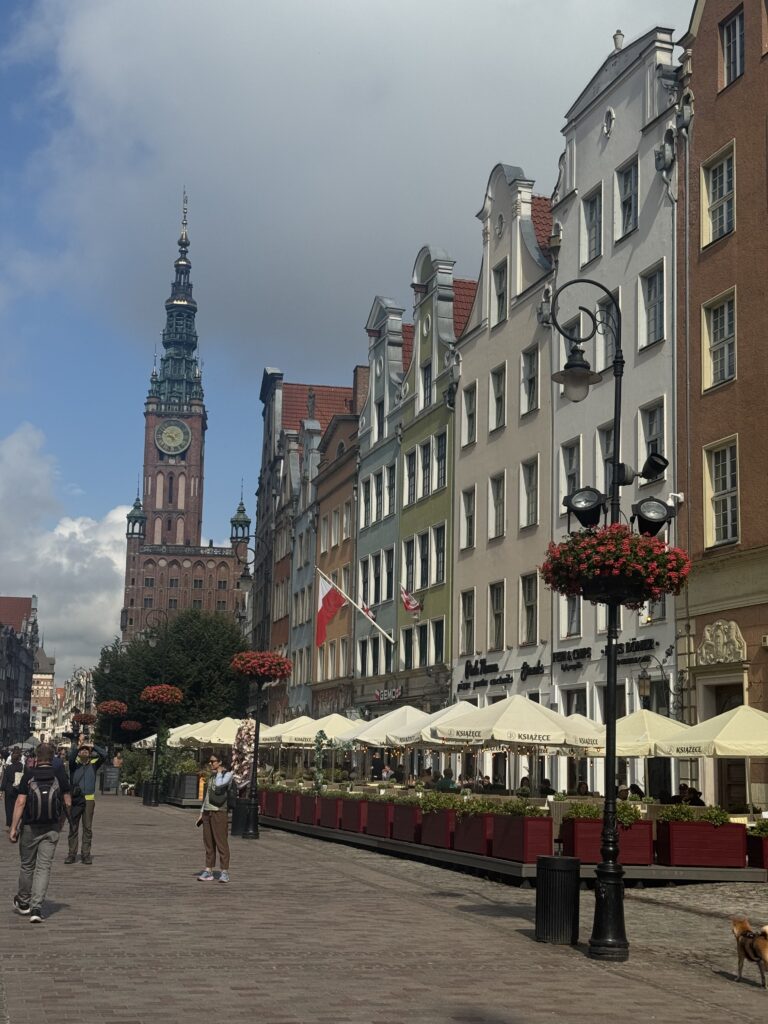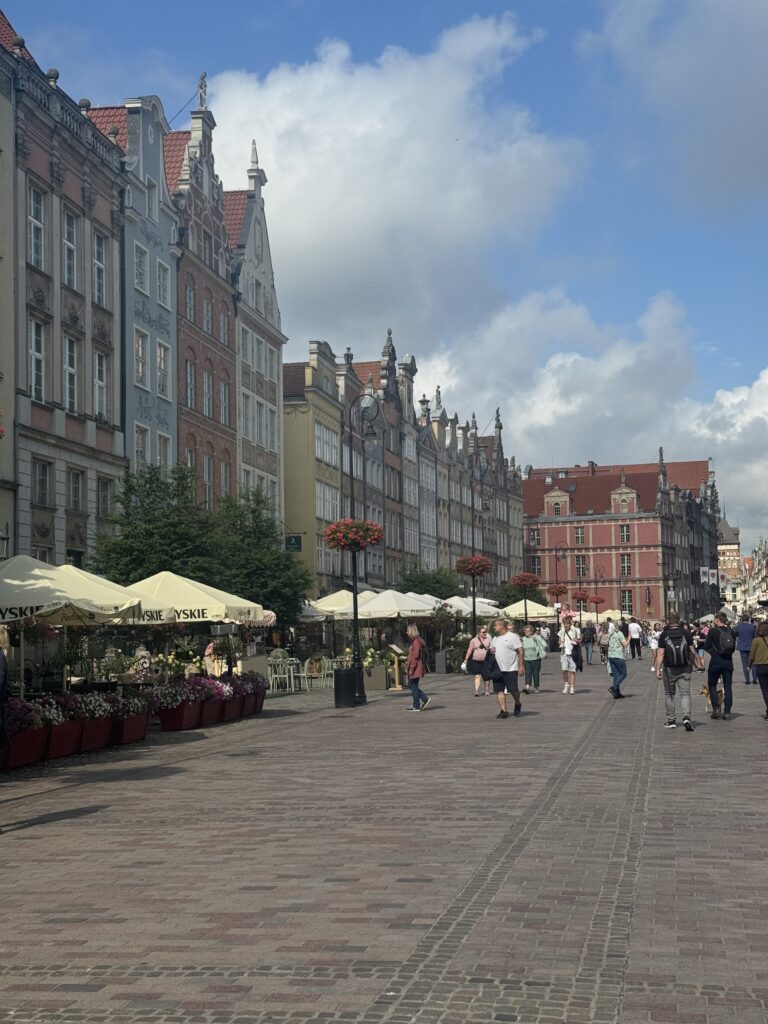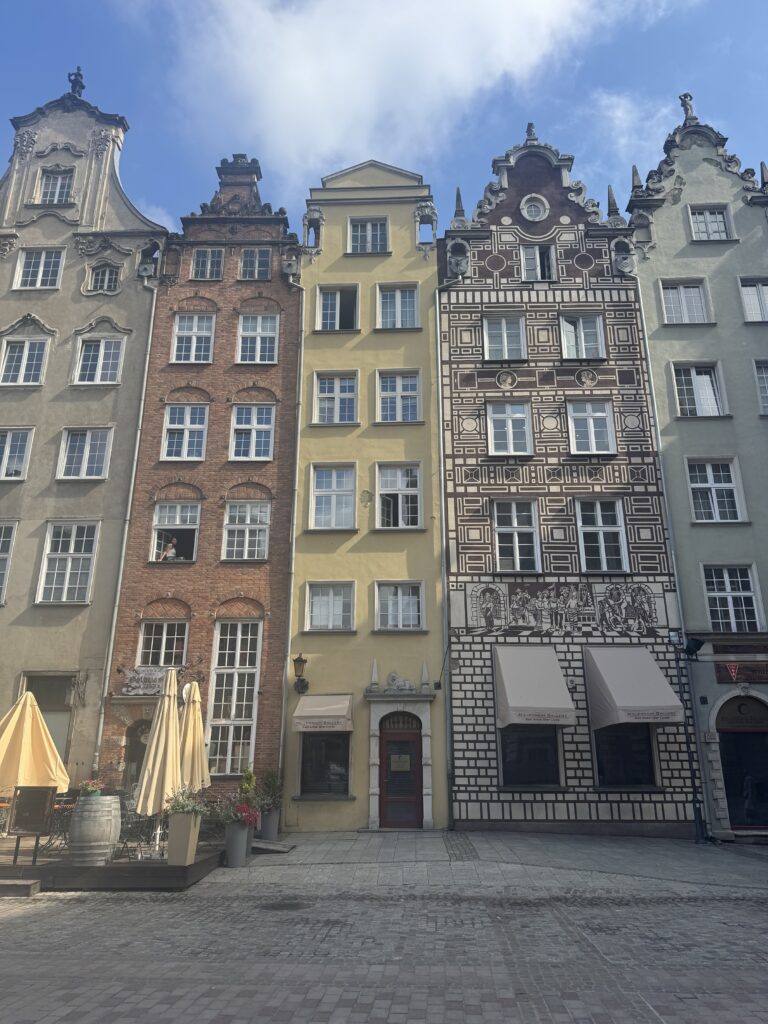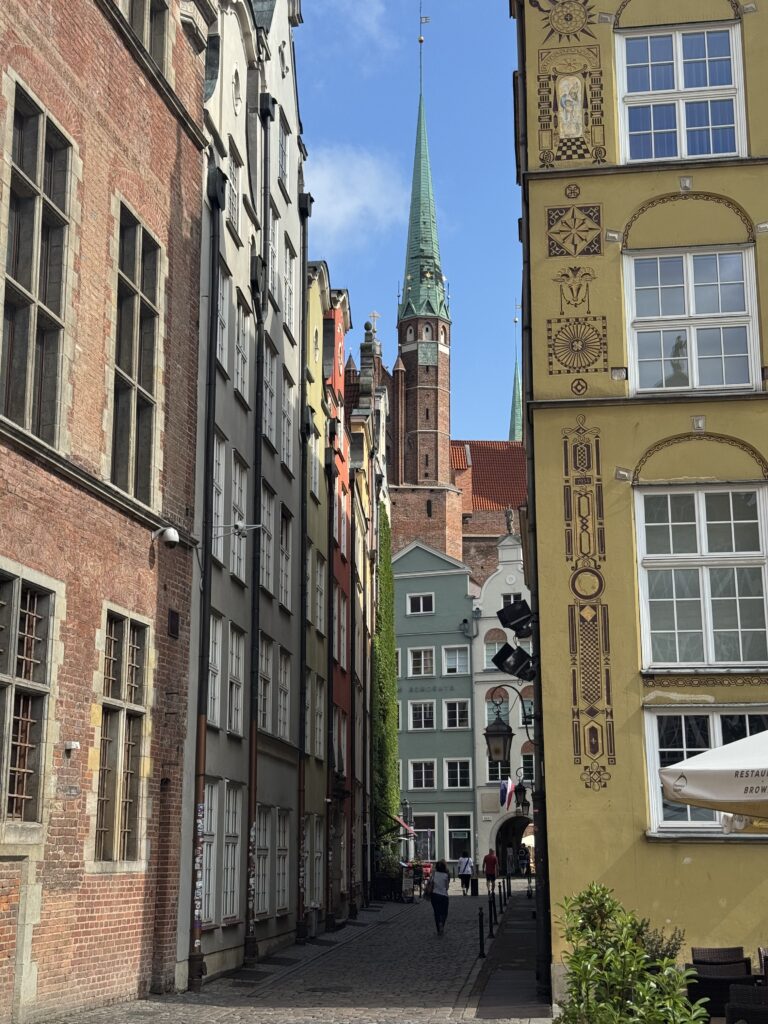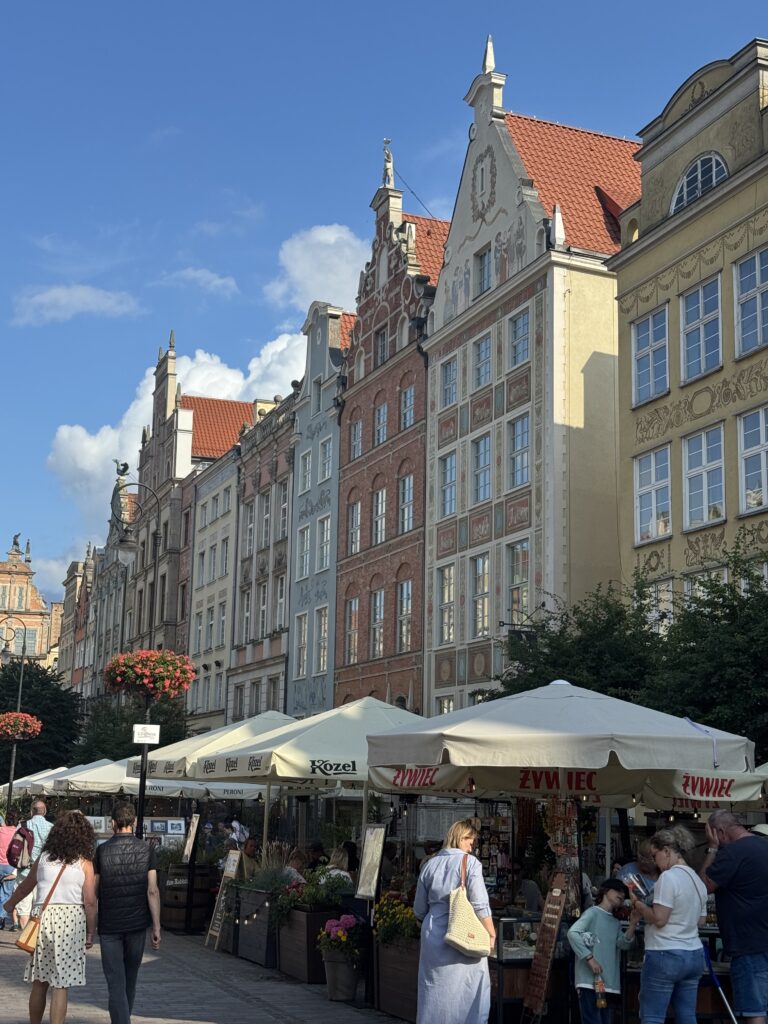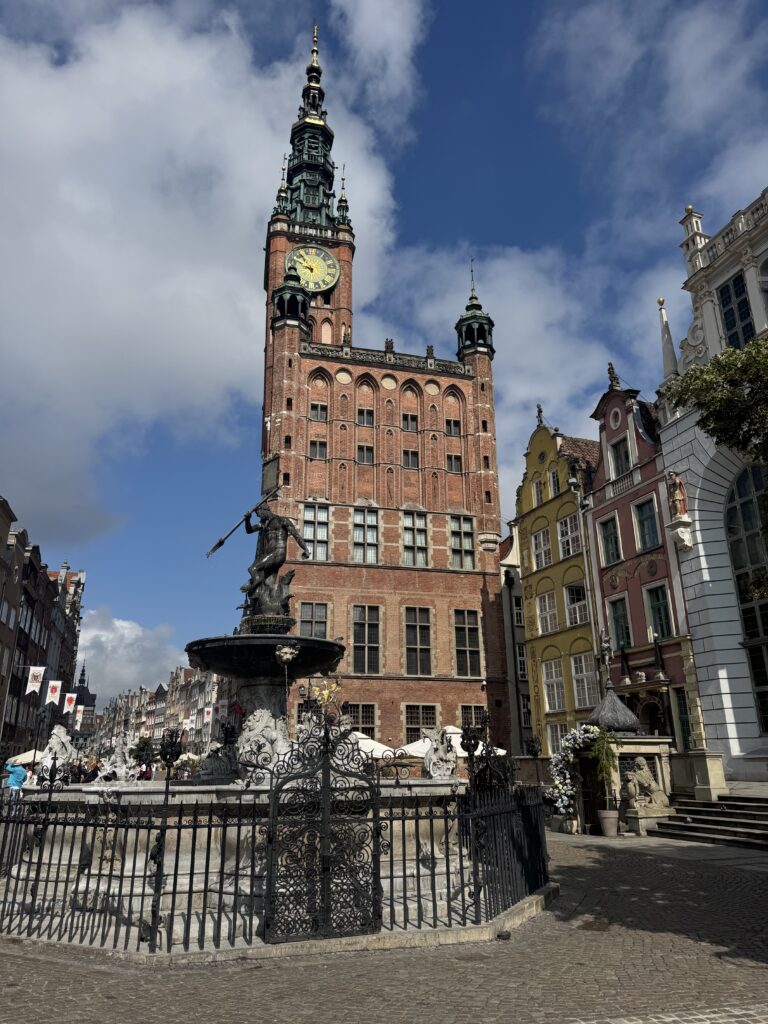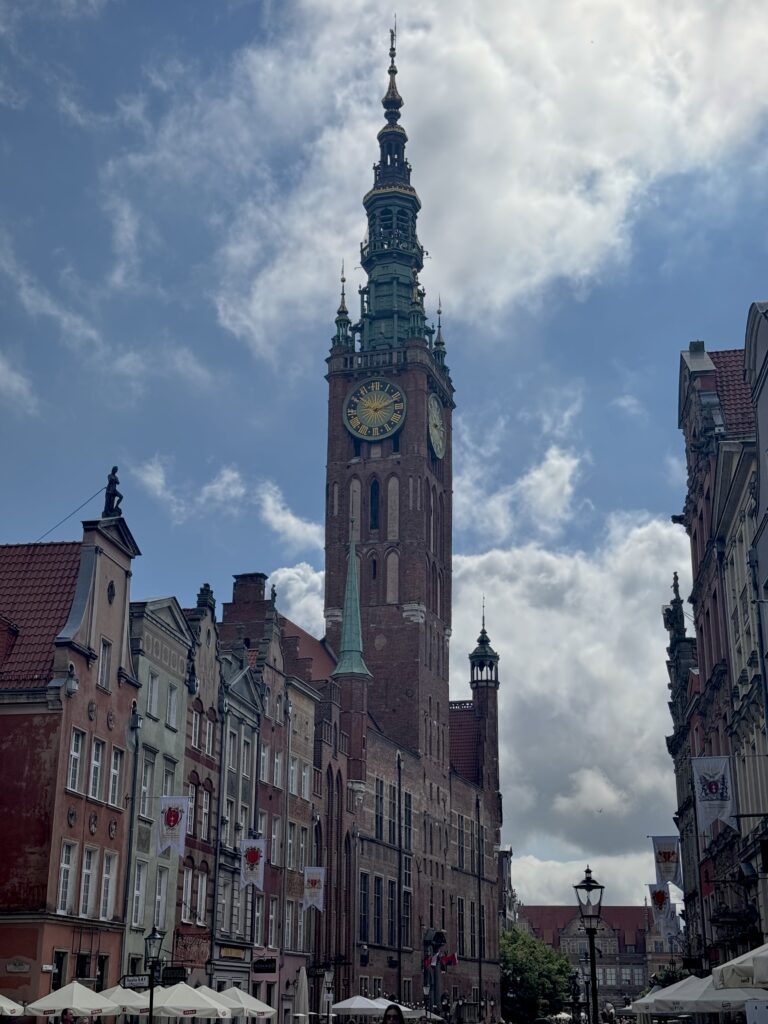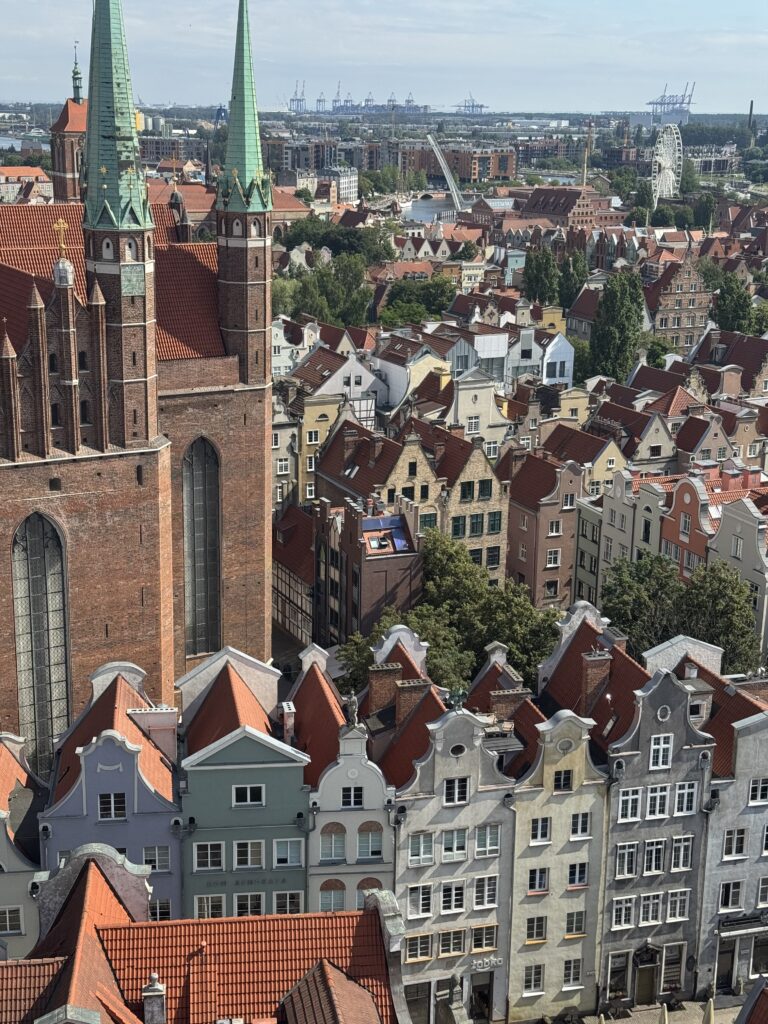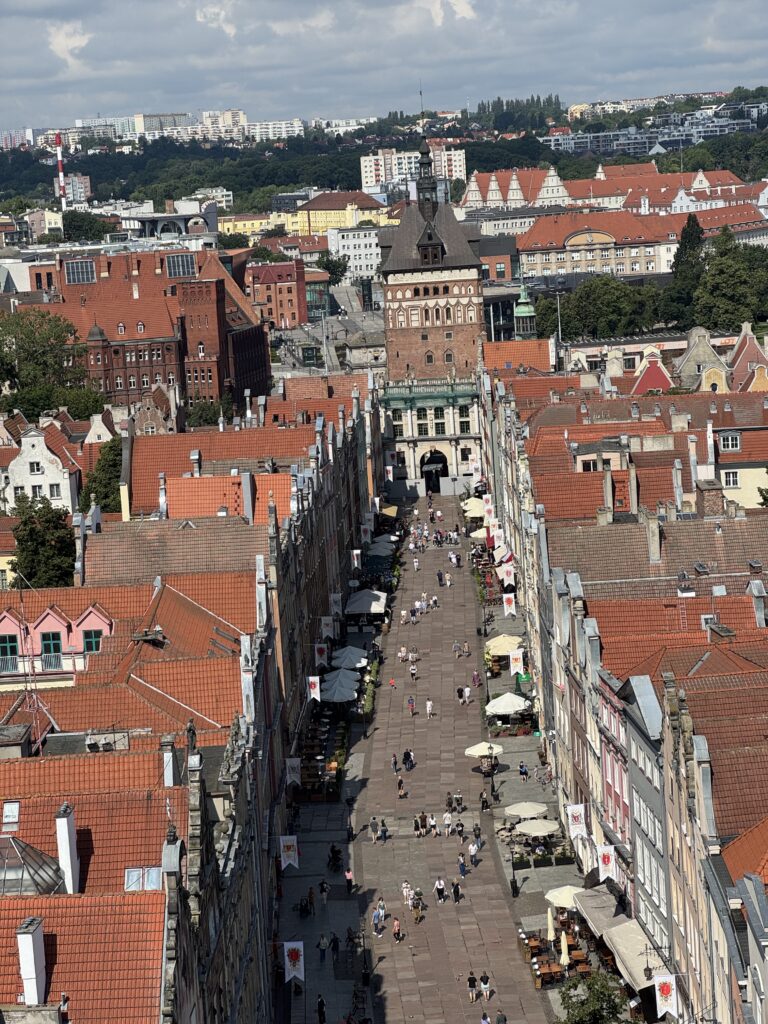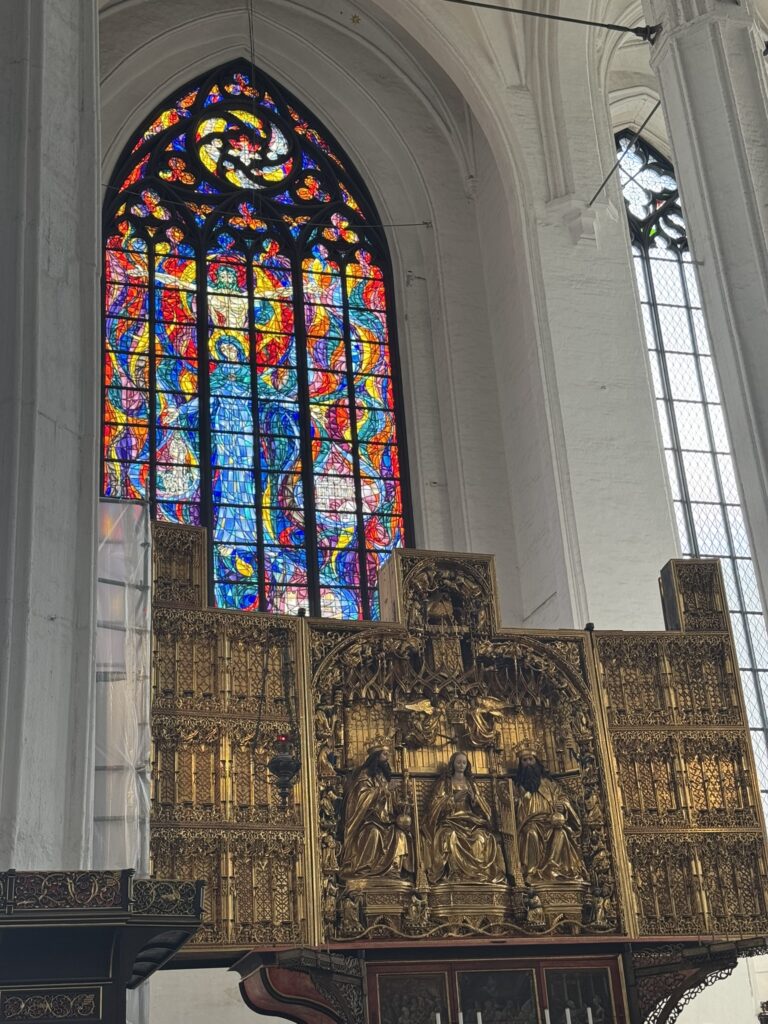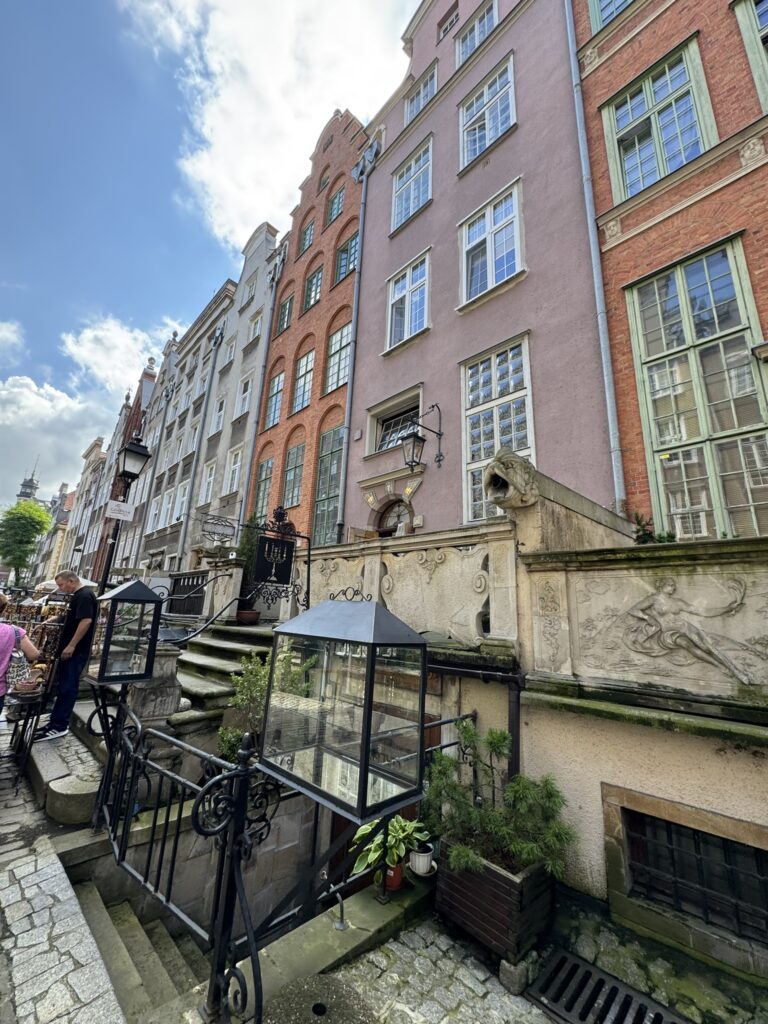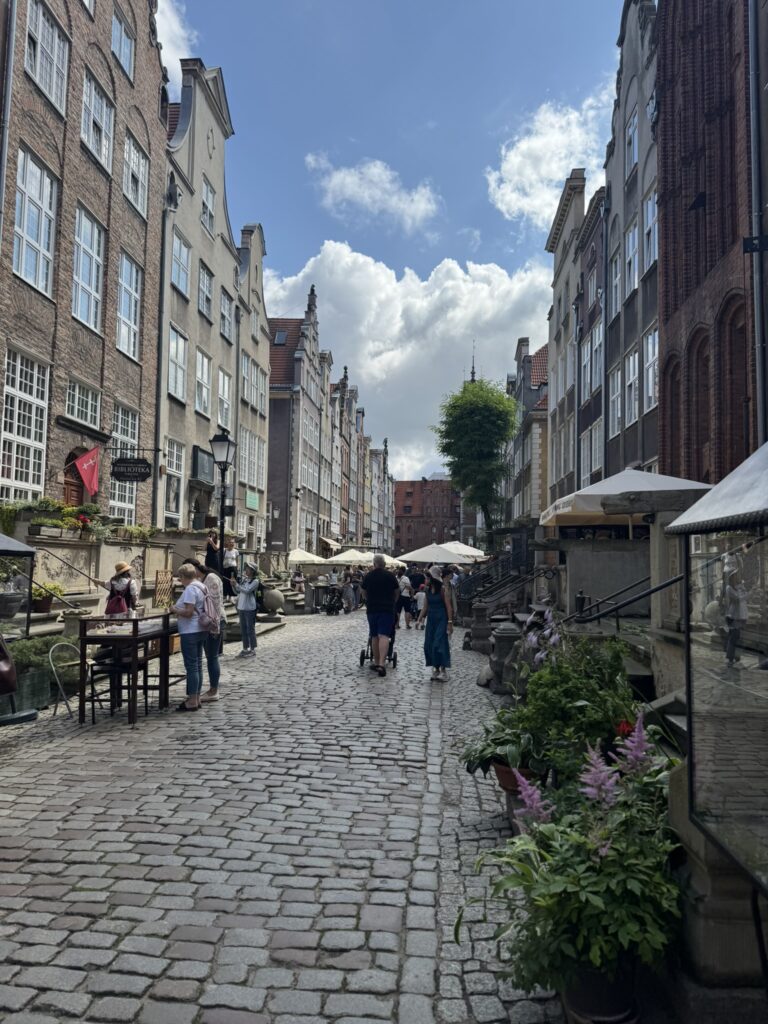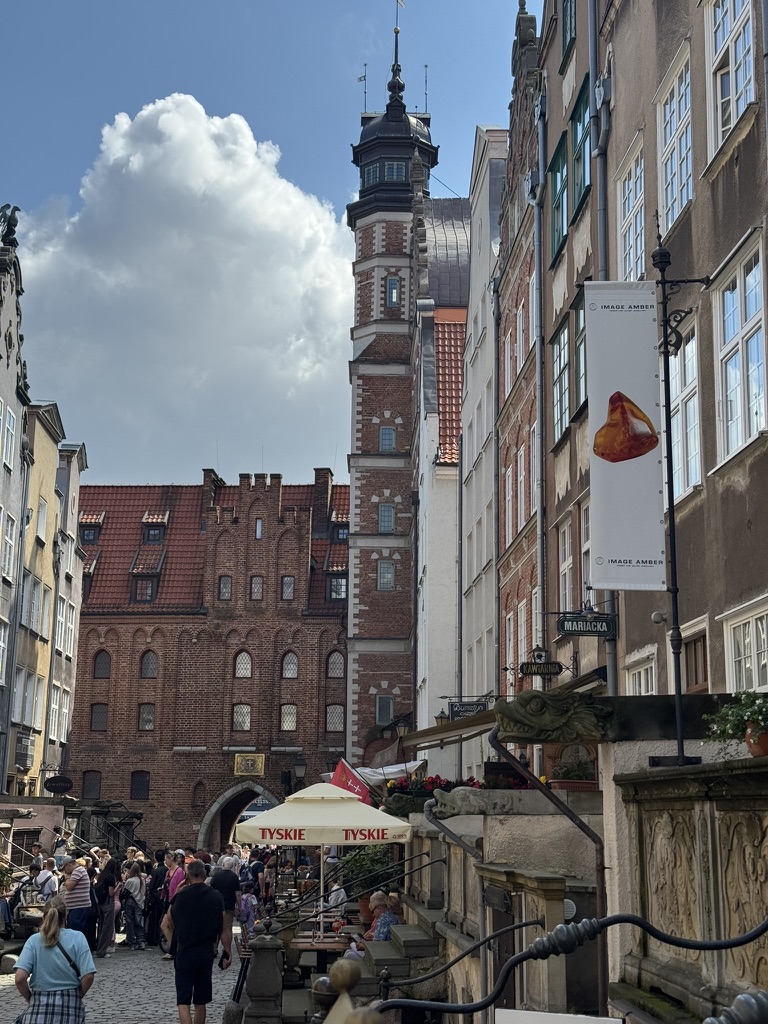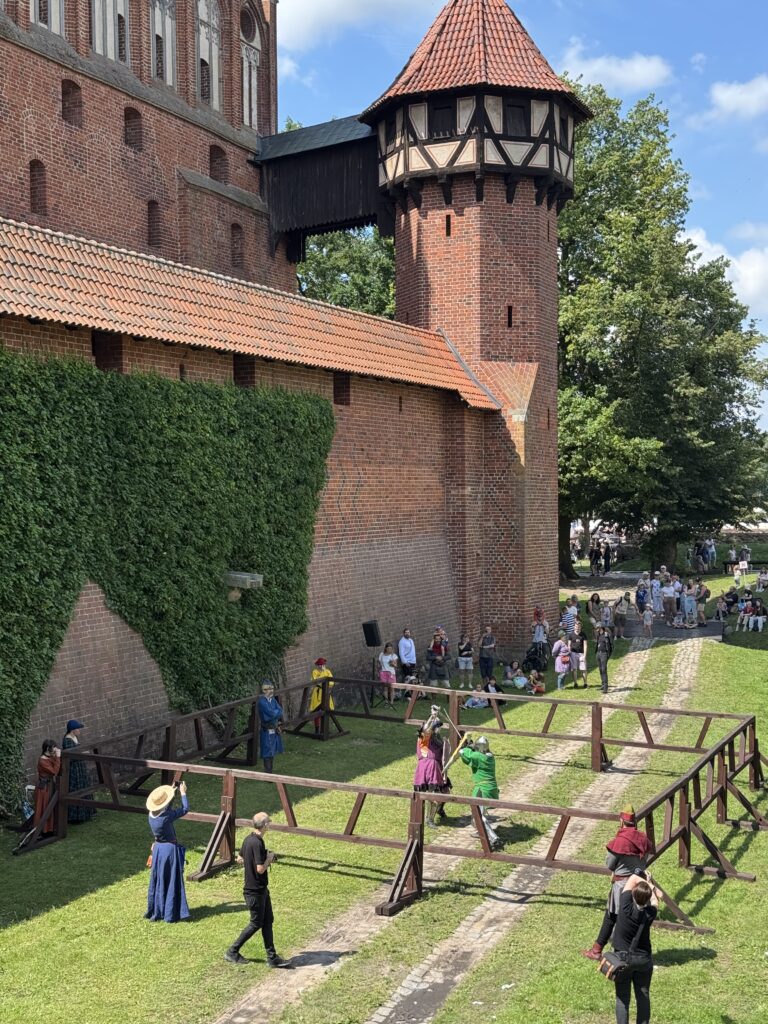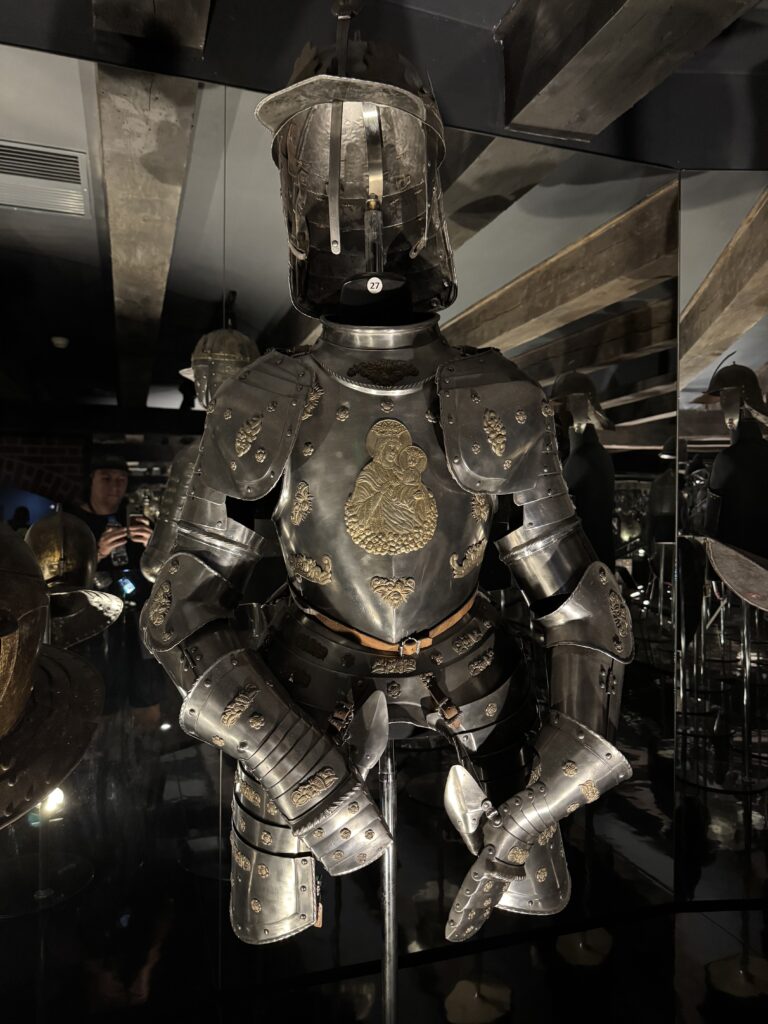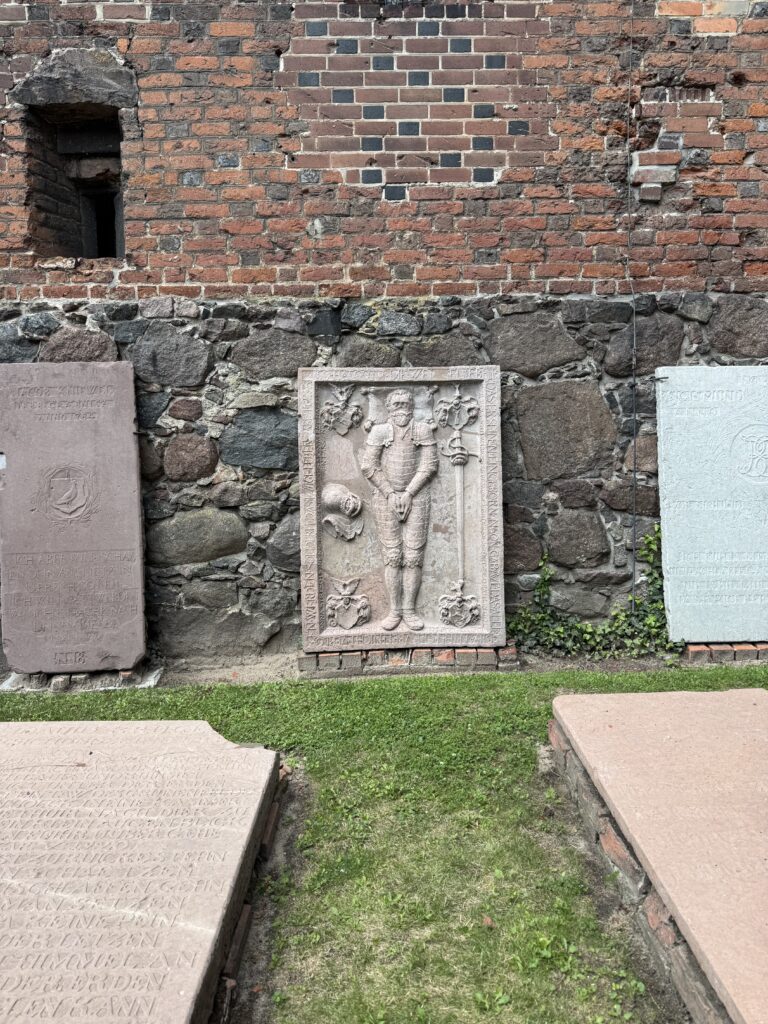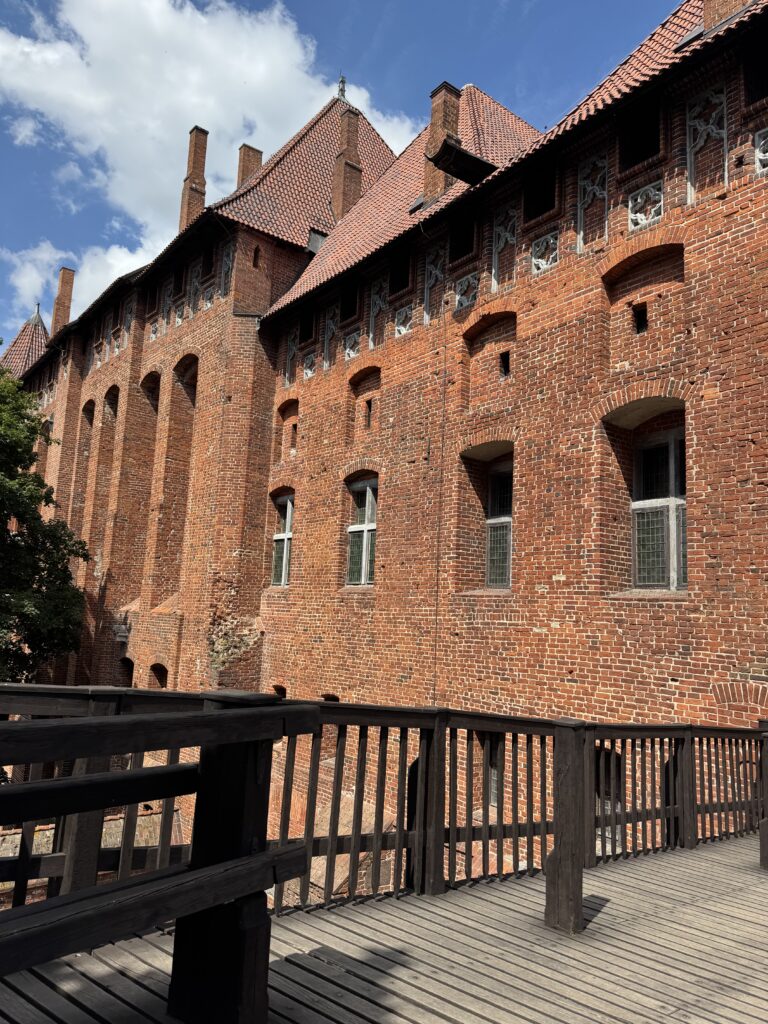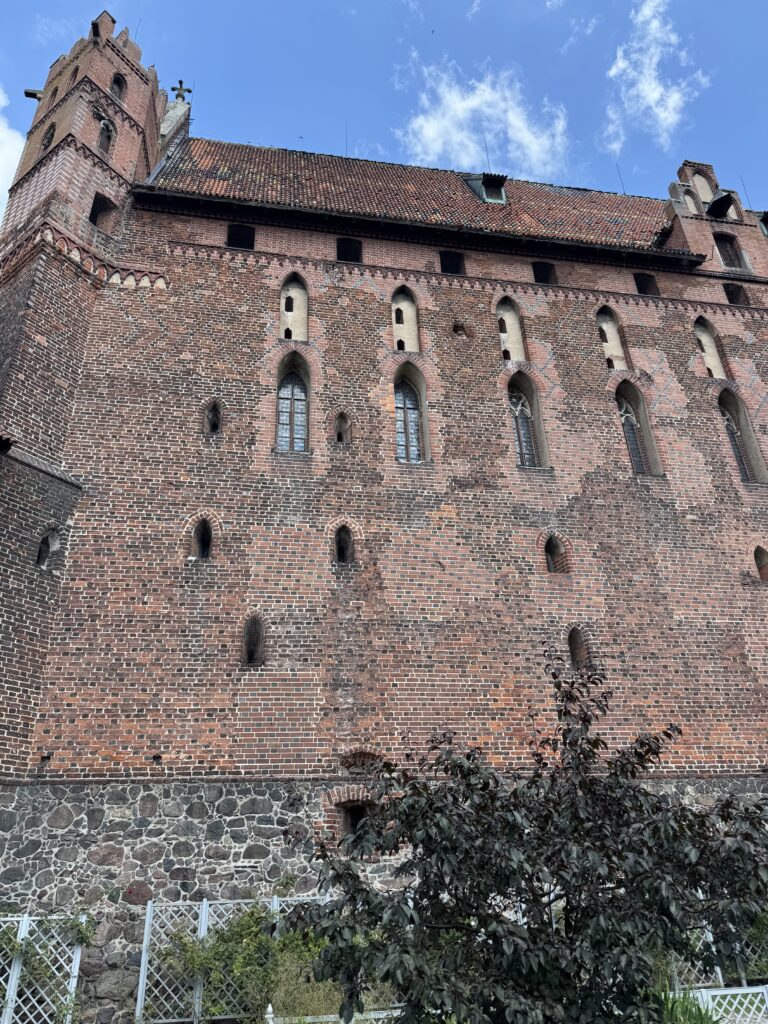Gdansk
17 July 2025

Gdansk is so far my favorite city in Poland. I swam in the Baltic Sea, walked the Old Town, and visited the biggest castle in the world.
Día 1
- Old Port Crane
- The Long Market
- Neptune’s Fountain
- Town Hall
- St. Mary’s Church
- Mariacka Street
- Motława River Embankment
- Brzeźno Beach
I got into Gdansk late at night because my train was delayed. So I only had time to walk from the train station to my hostel in the rain. It wasn’t as miserable as it sounds. There was almost no one in the streets, the buildings were lit up with the glow of streetlamps, and the rain was gentle. Strangely, this moment is among the most salient of my time in Gdansk.



I stayed at a nice hostel (Dzien Dobry Hostel) in a good location. It took me way too long to find my room, but otherwise I recommend it.
Old Port Crane

La Old Port Crane was built in the 15th century along the Motława River. It served as both a city gate and a massive crane that once lifted ship masts and cargo.
The Long Market
Długi Targ, or the Long Market, is the main street of Gdańsk’s Old Town. It’s lined with colorful buildings that sport Roman frescoes and statues. Wealthy merchants were part of a fad in returning to Roman iconography and art that was in vogue for the wealthy at the time. Gdańsk was largely destroyed in WW2, but the buildings have been lovingly rebuilt with the same style.
Neptune's Fountain
Neptune’s Fountain stands at the center of Długi Targ and is one of the city’s most famous landmarks. Neptune has welcomed visitors for centuries. It was successfully hidden when the Nazis invaded and has returned to his rightful place.
Town Hall

La Main Town Hall is a historic Gothic-Renaissance building with a tall clock tower. Inside is a museum that spans several floors. You can pay to see the museum and climb the clock tower, or pay for the clock tower only. I chose the second option because I was most interested in the view from the top. It didn’t disappoint.
St. Mary's Church
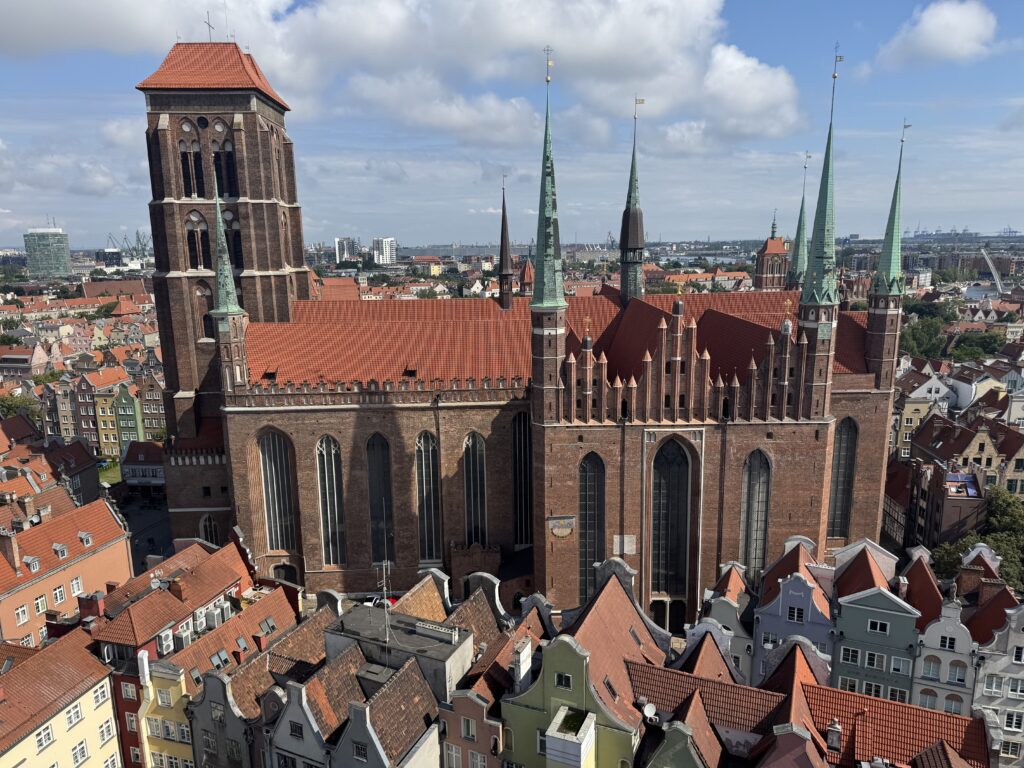
St. Mary’s Church is best viewed from the top of the Town Hall. It is one of the largest brick churches in the world and a masterpiece of Gothic architecture. Its interior is surprisingly spare in its decoration. The effect is one of light and space and room to think.
For lunch, I went to Balans Coffee Speciality & Breakfast to get a bagel. It was good, but didn’t blow my mind.
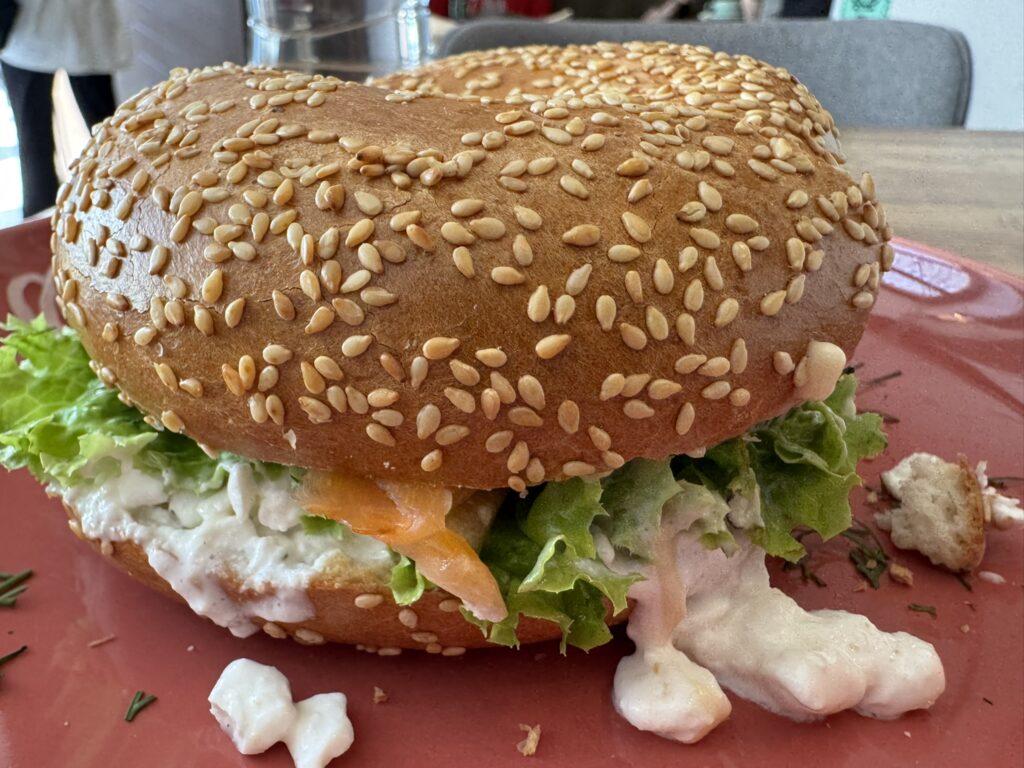
Mariacka Street
Mariacka Street is a charming cobblestone street famous for its historic merchant houses and amber shops. This was the trendiest street I stumbled upon. The wares being peddled in front of shops appeared to be more expensive and quality than in other places I had seen.
Motława River Embankment

La Motława River Embankment is the long name for the walk along the canal passing the Old Port Crane. It’s one of the best streets in the city for a pleasant stroll.
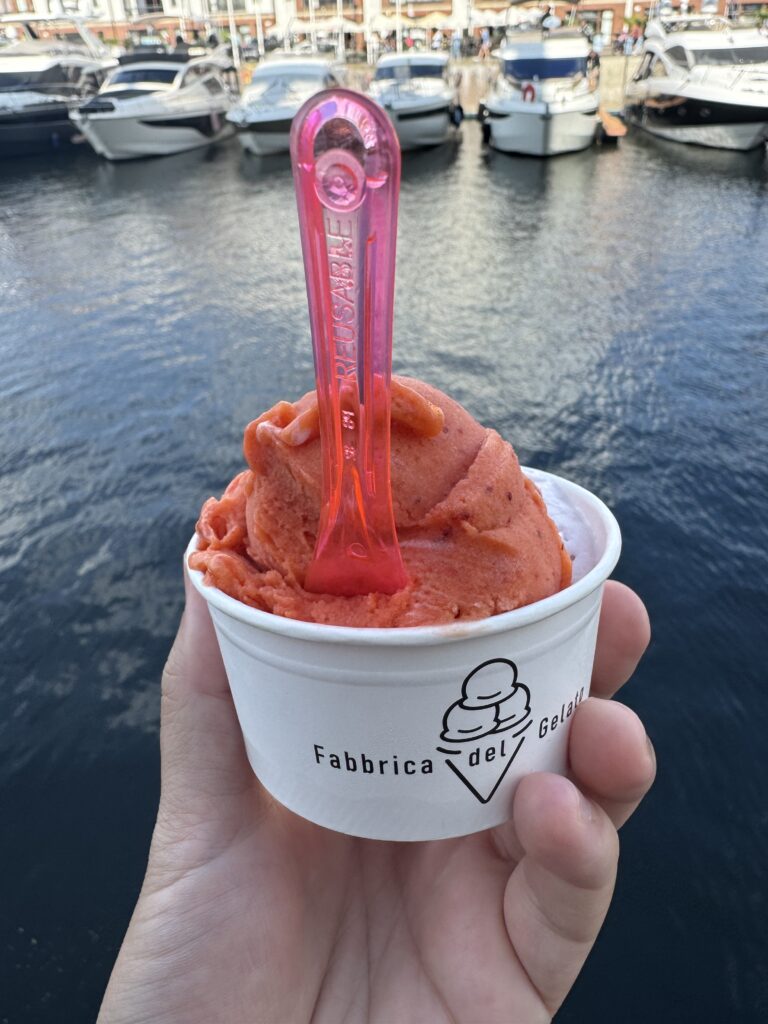
On my canal-side stroll, I stopped by Fabbrica Del Gelato for some, you guessed it, gelato. It was really good, possibly even great.
Brzeźno Beach
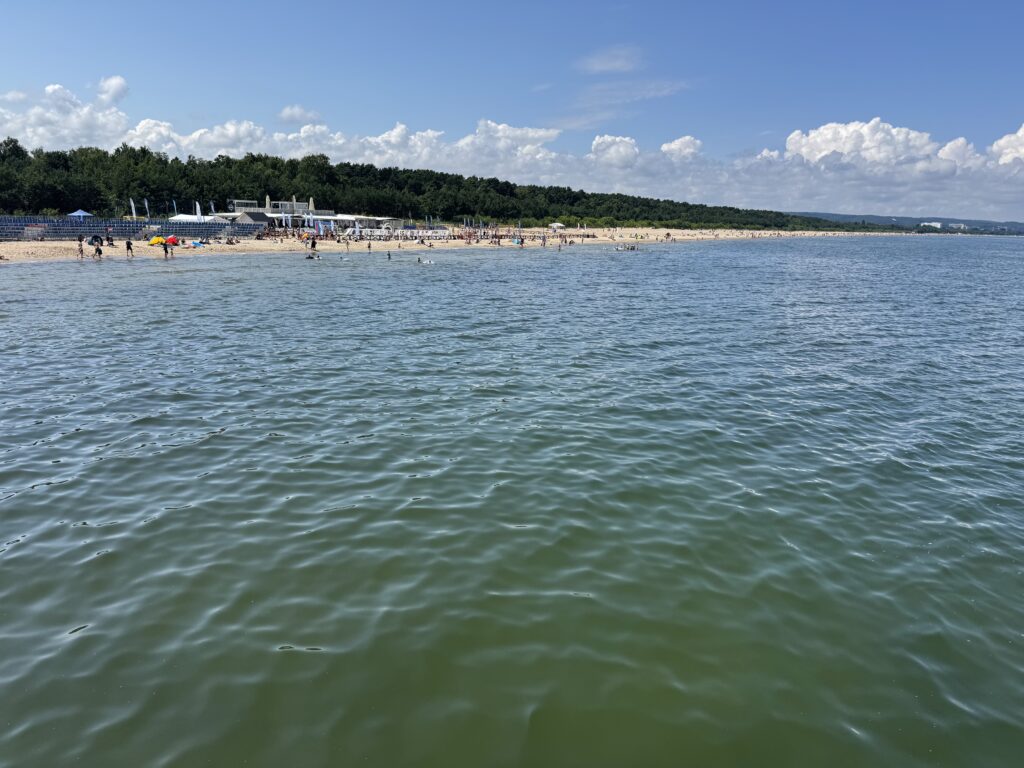
After a busy morning walking around Gdansk, I decided I needed some beach time. Brzeźno Beach is a sandy Baltic Sea beach about one hour away from my hostel. Apple Pay was not working with public transport in Poland, and I could not figure out how to pay, so I may have accidentally ridden the trains around without paying, unless the Polish police are reading this, in which case I am just kidding.
The water was warmer than I was expecting, and I had a great time lying in the sand listening to an audiobook. I am quite adept at romanticizing ideas in my mind. Swimming in the Baltic Sea on a summer day warms me as I write this at my desk on a cold, dark PNW night.

For some reason, I was craving Thai food nonstop in Central Europe. I scratched the itch at Thai Thai Gdańsk with some good but expensive Pad Kaprow. I actually went to this restaurant twice during my stay in Gdansk. I normally would eat local cuisine, but I was positively fiending for Thai, I don’t know what to say.
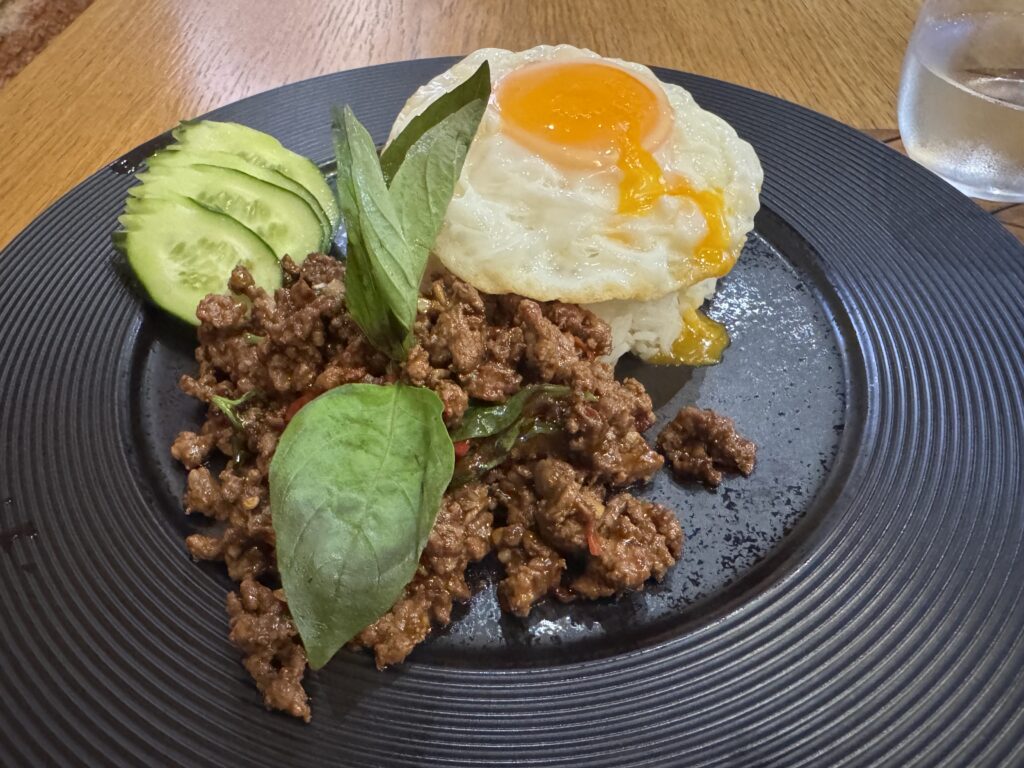
Día 2
- Malbork Castle
Malbork Castle
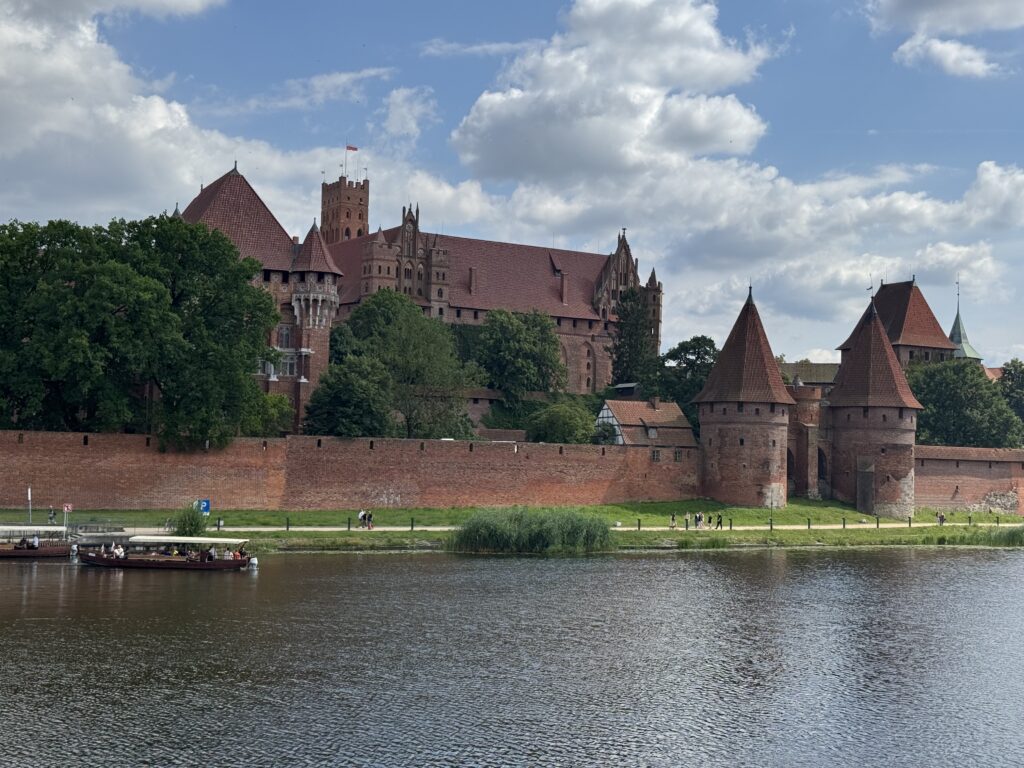
Malbork Castle is one of the coolest places I have been in Europe. It is among the largest brick castles in the world. It was built in the late 13th century by the Teutonic Knights, and it served as their headquarters. The fortress eventually grew into a massive complex. The brick construction makes it easier to imagine just how much work went into building the structures.
After the Teutonic Knights lost power in the 15th century, the castle passed to the Polish crown.
While I was there, there was some kind of Renaissance fair, which was super cool. I even got to see some fully armored knights sword fight.
The Teutonic Knights were a German Catholic military order founded during the Crusades in the late 12th century. They began as a charitable brotherhood, but they soon evolved into a powerful crusading force. At the peak of their power, they controlled present-day northern Poland, Lithuania, Latvia, and parts of Russia. The order launched campaigns to Christianize and control pagan territories in the Baltic region.
The interior of the buildings was as impressive as the exterior. I loved learning about the structures and the history through the audio tour. The main areas were rather crowded when I was there so there were a few rooms I rushed through.
Malbork suffered significant damage over the centuries, especially during World War II. Poland began an extensive reconstruction effort in the mid-20th century, and it is apparent. The walls and towers are a patchwork of different reconstruction efforts. I am so glad it has been restored.
Next time
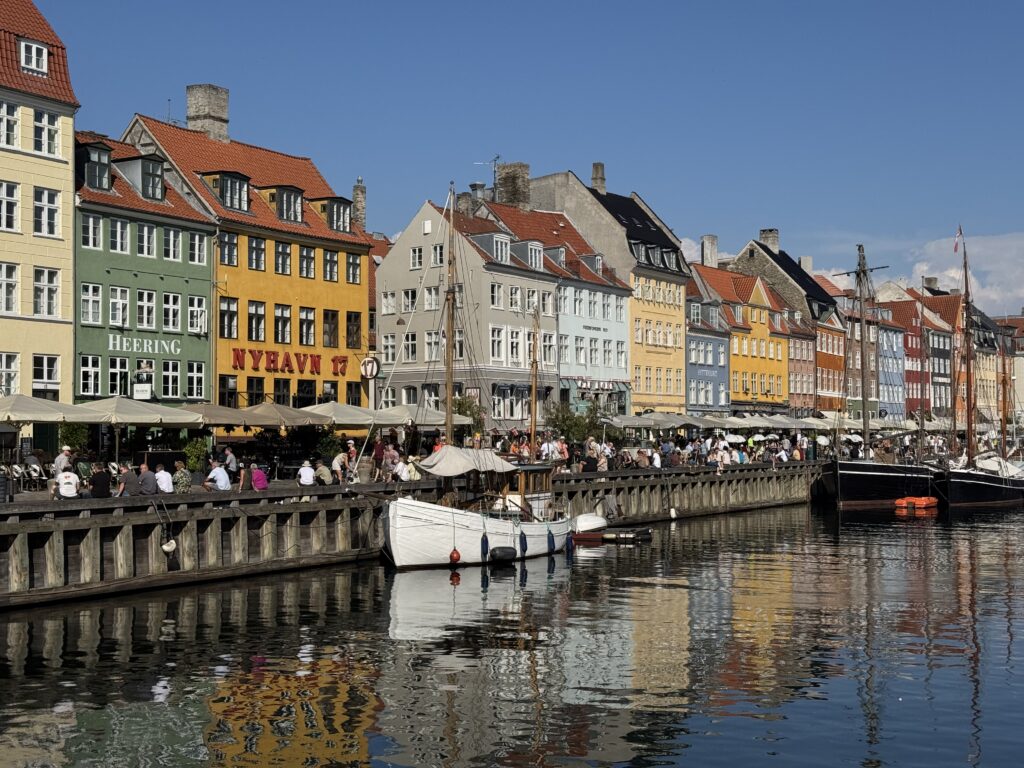
On my next adventure, I swim in the canals of Copenhagen.


